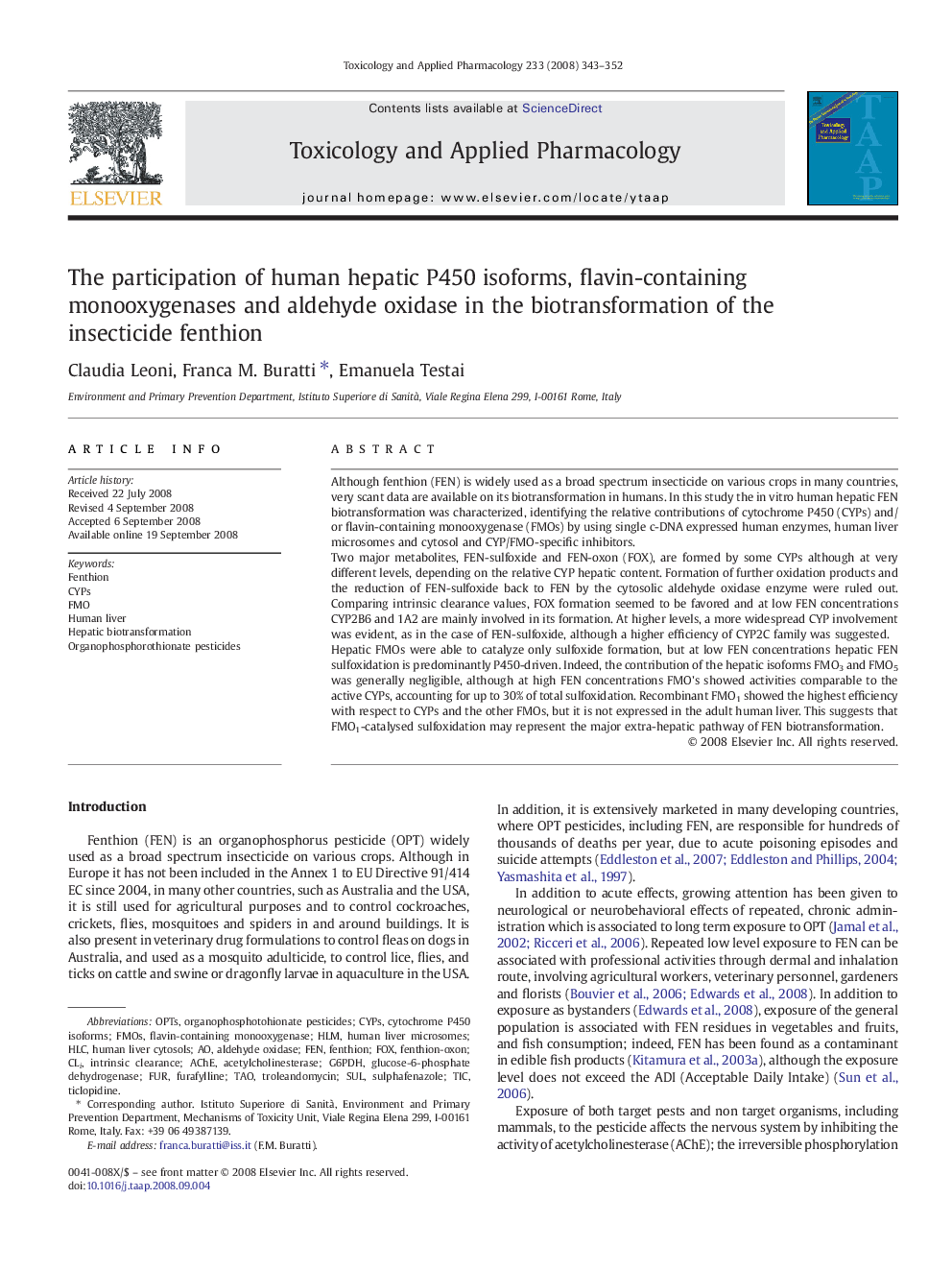| کد مقاله | کد نشریه | سال انتشار | مقاله انگلیسی | نسخه تمام متن |
|---|---|---|---|---|
| 2570874 | 1128606 | 2008 | 10 صفحه PDF | دانلود رایگان |

Although fenthion (FEN) is widely used as a broad spectrum insecticide on various crops in many countries, very scant data are available on its biotransformation in humans. In this study the in vitro human hepatic FEN biotransformation was characterized, identifying the relative contributions of cytochrome P450 (CYPs) and/or flavin-containing monooxygenase (FMOs) by using single c-DNA expressed human enzymes, human liver microsomes and cytosol and CYP/FMO-specific inhibitors.Two major metabolites, FEN-sulfoxide and FEN-oxon (FOX), are formed by some CYPs although at very different levels, depending on the relative CYP hepatic content. Formation of further oxidation products and the reduction of FEN-sulfoxide back to FEN by the cytosolic aldehyde oxidase enzyme were ruled out. Comparing intrinsic clearance values, FOX formation seemed to be favored and at low FEN concentrations CYP2B6 and 1A2 are mainly involved in its formation. At higher levels, a more widespread CYP involvement was evident, as in the case of FEN-sulfoxide, although a higher efficiency of CYP2C family was suggested.Hepatic FMOs were able to catalyze only sulfoxide formation, but at low FEN concentrations hepatic FEN sulfoxidation is predominantly P450-driven. Indeed, the contribution of the hepatic isoforms FMO3 and FMO5 was generally negligible, although at high FEN concentrations FMO's showed activities comparable to the active CYPs, accounting for up to 30% of total sulfoxidation. Recombinant FMO1 showed the highest efficiency with respect to CYPs and the other FMOs, but it is not expressed in the adult human liver. This suggests that FMO1-catalysed sulfoxidation may represent the major extra-hepatic pathway of FEN biotransformation.
Journal: Toxicology and Applied Pharmacology - Volume 233, Issue 2, 1 December 2008, Pages 343–352